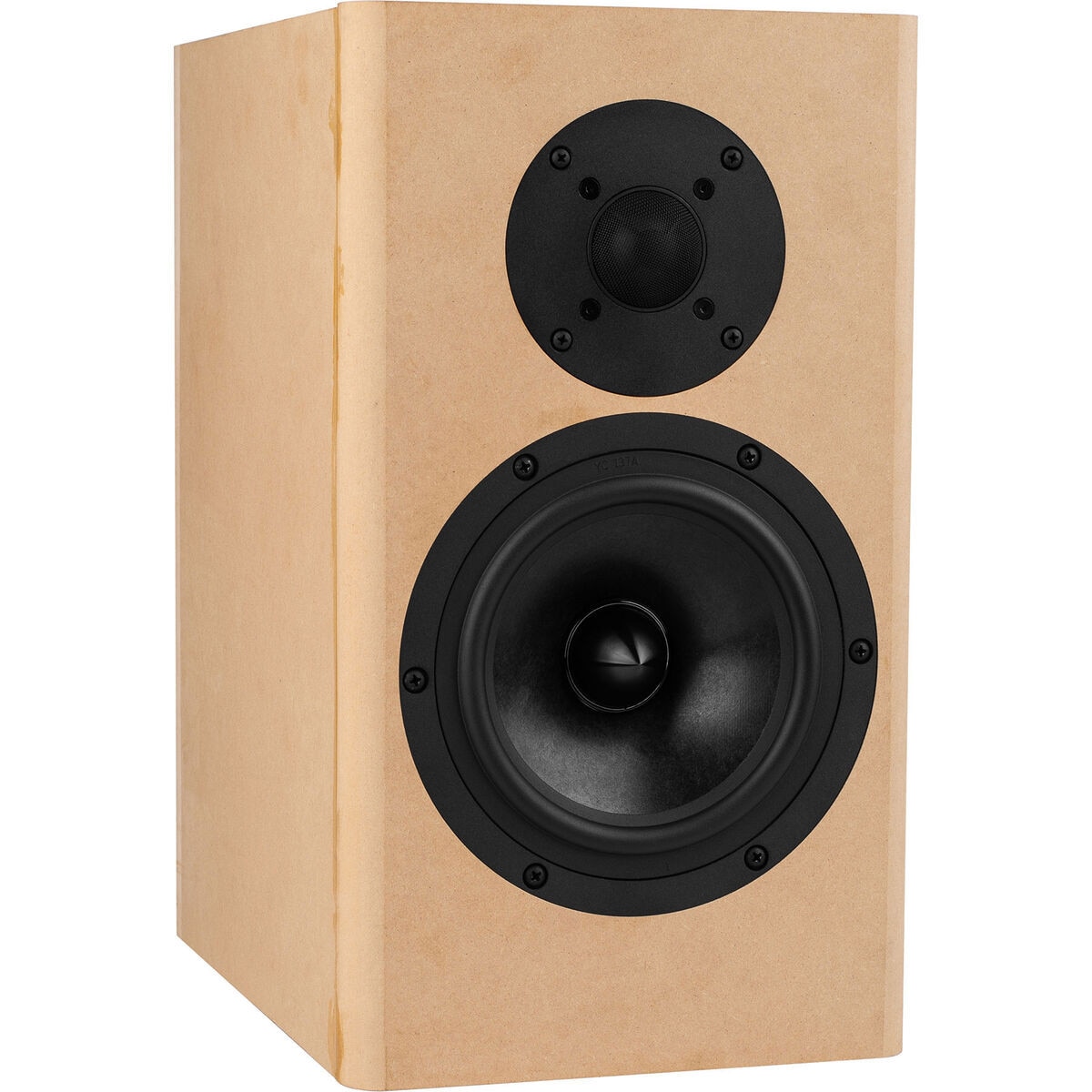Can anyone comment on these...
...for example?
This is the sort of thing I would just love to have blind tested among speakers three or four or five times the price of these components.
"Cheap" to me is something under 200usd for all components. Even <100usd. Heck, why not? There are just too many 5 to 6.5 inch off-the-shelf commercial speaker offerings
out there anymore that often challenge the value of diy beyond this range..... for many of us.
I'd love to see more builds attempted and reviewed, and compared in real world listening, to the >500 dollar range of two way diy that seems to have become the norm.
There are literally hundreds of drivers available that would meet that <200 goal. But so few designers seem interested in really implementing them.
No necessity for cast frames, exotic "egyptian papyrus" cones, fancifully named composites, etc. I have a very, very, strong hunch that there are some real surprises lurking out there, that while lacking a bit in the pure measurements dept, might very well hold up to real listening comparisons, to projects 5X their cost.
The C-notes seemed to me to be an interesting step into that void. Finally. And I expected that a slew of similarly high value, low cost, designs would follow.... given the sheer number of other components available in this price range. But it didn't happen. Maybe PartsExpress wasn't interested in pursuing too much of this from a profit standpoint? Possible. I don't know.
In the notes for the above projects Michael muses that....
The Peerless 830656 puts the Morel CAW634 to shame. At only $16, she blew away the Morel that cost $154.
YMMV. Certainly. One man's X is another's Y. Etc. But I think a lot of people would be really nervous about a
100 percent blind shootout between their 1100USD project and another 200USD project. This thread really should be focused entirely on value over hype.
...even if it's months old

Comparing DIY to "store bought" speakers is a thorny path to tread. There are just so many factors ranging from cash outlays (Do you own enough tools or will they have to be purchased?) to the really important things like how the S.O. is going to feel about how they look

It's better to let people decide what's important to them and pre-suppose that as far as having a box and the sound that comes out of it, it is going to cost at least twice as much to buy than to make and leave it at that.
As far as as cost/value of DIY is concerned, there are two tiers, kit builds and plan builds and here "economy of quantity" pays off as most of the time the kits, in general, are going to save around 30% over buying from a BOM list (and if a flat-pack is included, the savings can be even greater, precluding buying some tools).
So, if unless one is dead-set on doing something different, a kit is going to offer a better cost to value assuming the final result pleases the ear, and that is the rub.
My current thinking is that there are really only two vendors of "budget" kits, Parts Express and DIY Sound Group, so lets examine those.
PE - Like many here, I started this hobby more than a decade ago building PE kits at a time when most of their offerings were the products of different well known designers and the finished product reflected his hand. Today, it feels most of what PE has avail. is a result of "design by committee" with considerations other than sound quality.
DIY SG - Erich cares about SQ, but most of the time, the majority of his kits are "out of stock".
To be clear, I don't want to sound like I'm deriding either PE or DIY SG. They are operating in the difficult arena of today's business World and I appreciate what they do for hobby, I only mention this because today I feel more than ever, it's worth looking at "scratch builds".
A few posts back in this thread, I examined three pairs I built over the years and what they would cost to build today. All three are acceptable to me as good enough to be used as a stereo pr.s in a music-listening system, and as such they need to be able to do a couple of things;
1) To be able project out and envelop the listening position in a medium sized room.
2) To satisfy w/ a minimum of processing.
To test the latter, I run them w/ just a DAC and power amp and if they sound gd., they will sound good no matter how they get used later.
If a speaker pr. w/ woofers smaller than 5 inches and a parts total under $300 can achieve this, I haven't experienced them.
After totaling today's parts cost w/ PE boxes and a basic finish (tools not included), the Girl From Ipanema by Paul Carmody and Nexus by Matt Grant were around $400. The Aviatrix kit from PE is less, but now uses the Dayton RST tweeter which makes me a little nervous, although Curt Campbell's design w/ the original RS28F tweeter in the MTM form are, IMO, equal to the other budget 2-ways I have.
When I made that post I was thinking that that $400 number was about rock bottom for what I thought it would cost to build a really good pr. of budget stand-mounts.
But since then, I built the Swan/Hivi 2.2's avail. on Amazon for $240 (sometimes going as low as $180) and am simply blown-away by them. Near field or out in a fair sized room, I really don't think any budget DIY 2-way pr., whether a kit or built from plans can come close to those.



